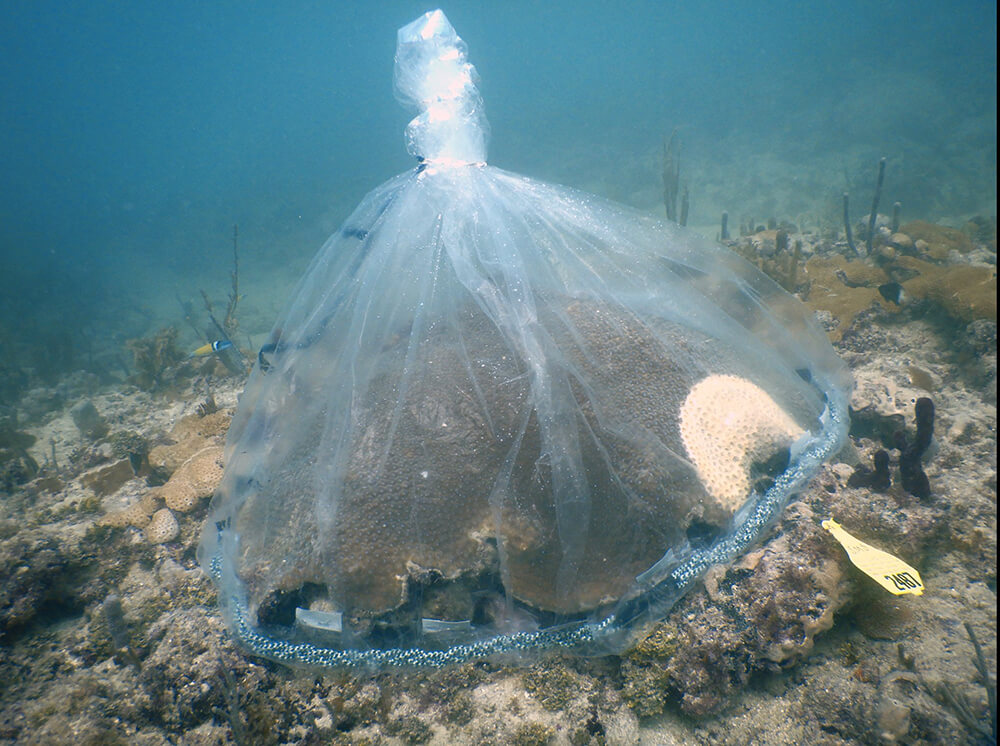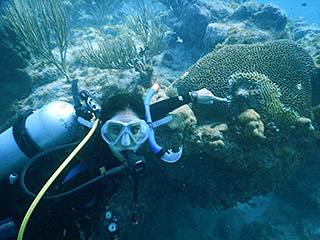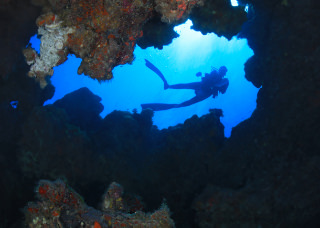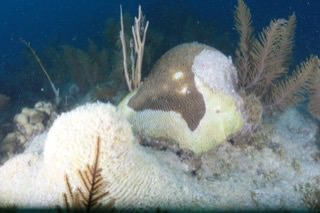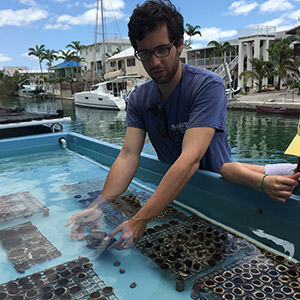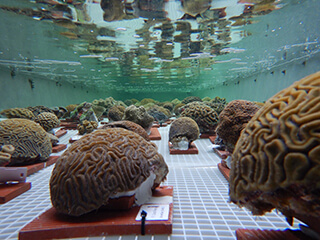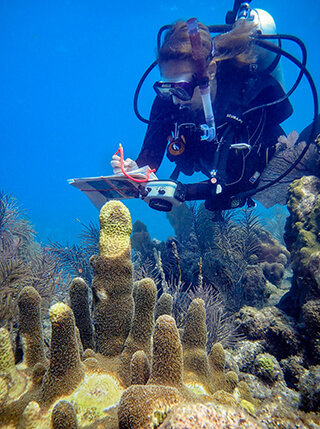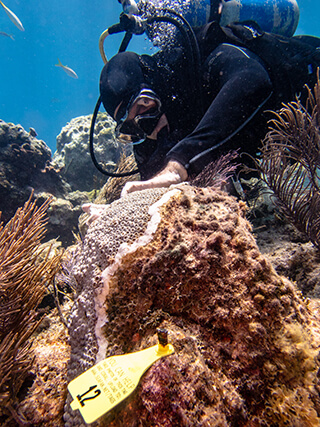Media Resources
Scott Atwell
Communications and Outreach Manager
Florida Keys National Marine Sanctuary
305-809-4694
Scott.Atwell@noaa.gov
Key Messages
Since 2014, Florida's Coral Reef has been experiencing a historic outbreak of coral disease. Scientists are calling this "stony coral tissue loss disease," because it only affects stony corals. Government agencies, academic institutions, and conservation organizations are respond to the outbreak. The Florida Department of Environmental Protection, the Florida Fish and Wildlife Conservation Commission, the National Oceanic and Atmospheric Administration, and the National Park Service are the lead agencies.
This disease outbreak is unprecedented due to its large geographic range, extended duration, high rates of mortality, and the number of coral species affected. Nearly half of the stony coral species found on Florida's Coral Reef are affected, including the primary reef-building species.
Stony coral tissue loss disease has spread to the greater Caribbean, and lessons from Florida are being shared in hopes of minimizing the outbreak's impact there.
This outbreak and the collaborative response are ongoing. Partners are working to document the outbreak, identify the pathogen(s) and contributing factors, and to identify and develop innovative treatments and interventions. Coral rescue for preservation of genetic diversity is an important component of the disease response. Bold, aggressive restoration efforts are needed for reef recovery.
While the situation is urgent, it is not too late to save this incredibly important ecosystem. Corals are resilient if given the chance and the enabling conditions for their growth and survival. The key is to reduce local stressors to support reproduction, growth, and survival.
Photos
Florida Fish and Wildlife Conservation Commission - Coral Rescue Photos
Videos
Intervention expert Emily Hower applies an antibiotic paste to a lesion in hopes of slowing or arresting the progression of stony coral tissue loss disease. Credit: Karen Neely/Nova Southeastern University
Diver Alysha Brunelle applies chlorinated epoxy to the firebreak and active disease margins on a diseased Mountainous Star coral (Oribicella faveolata) as an experiment to determine if it will slow or stop progression of stony coral tissue loss disease. Credit: Brian K. Walker/Nova Southeastern University
Researcher Brian Walker uses the underwater grinder method to create a 1 cm wide and 1 cm deep firebreak along the scored marks around a disease margin. Credit: Jeff Beal/Nova Southeastern University
This Pillar Coral (Dendrogyra cylindrus), an endangered species near extinction in the Florida Keys, shows early signs of stony tissue loss disease. Credit: Nick Zachar/NOAA
Diver Alysha Brunelle applies chlorinated epoxy to the firebreak and active disease margins on a Great Star coral (Montastraea cavernosa) as an experiment to determine if it will slow or stop progression of stony coral tissue loss disease. Credit: Brian K. Walker/Nova Southeastern University
Researcher Brian Walker uses the hammer and chisel method to create a 1-2 cm wide and 1 cm deep firebreak along the scored marks around a disease margin. Credit: Alysha Brunelle/Nova Southeastern University
Science divers evaluate stony corals in the Lower Florida Keys as a tissue loss disease progresses down the Florida Reef Tract. Credit: Nick Zachar/NOAA
News Archive
Annual Florida Coral Disease Technical Workshop held virtually
In late May, the Annual Florida Stony Coral Tissue Loss Disease Technical Workshop brought together experts focused on developing research priorities, establishing techniques for scaling up intervention activities responsibly, enhancing communication strategies, and engaging with Caribbean partners. Nearly 200 individuals from over a dozen countries and territories were represented. Outcomes from the virtual workshop will guide the next year of activities including utilizing probiotics to build coral resilience, continuing coral propagation activities, and communicating unified messages about Florida's Coral Reef.
New dashboard tracks coral disease in the Caribbean
As stony coral tissue loss disease spreads in the Caribbean region, a new online tool is tracking its progression and recording the efforts made to control and respond to the threat. Natural resource managers and their partners across the Caribbean region are actively exchanging information and sharing best practices about coral disease monitoring, treatment and outreach.
MPAConnect, a partnership between the Gulf and Caribbean Fisheries Institute and NOAA's Coral Reef Conservation Program with a network of 32 MPAs in 11 Caribbean countries/territories, and the Atlantic and Gulf Rapid Reef Assessment Program collaborated on the development of a GIS-based dashboard as a new online tool. Maps on the dashboard show the presence of stony coral tissue loss disease around the region, a time lapse of its progression and the most affected coral species.
NOAA Coral Reef Conservation Program (CRCP) status report for Florida's Coral Reef
The report highlights the need to continue efforts to reduce the threats contributing to their decline in order to restore resilience to this valuable resource. It also reinforces the urgent need for more active restoration to bring back ecosystem function and ecosystem services critical to the way of life and economy of South Florida. The report is the product of collaboration among the NOAA Coral Program and numerous partners, including the University of Maryland Center for Environmental Science's Integration and Application Network, Florida Keys National Marine Sanctuary, Nova Southeastern University, U.S. National Park Service, Florida Fish and Wildlife Conservation Commission, University of Miami, Miami-Dade County, The Nature Conservancy, Broward County, and University of South Florida.
Florida launches reef restoration and awareness campaign
During Super Bowl LIV Week in Miami, Governor Ron DeSantis was joined by Florida Department of Environmental Protection (DEP) Secretary Noah Valenstein, Florida Fish and Wildlife Conservation Commission (FWC) Executive Director Eric Sutton and other partners to kickoff 100 Yards of Hope and announce a new initiative to promote awareness and protection of Florida's Coral Reef ecosystem.
100 Yards of Hope is a coral reef restoration project in conjunction with FORCE BLUE to plant 100 yards of coral while also honoring the NFL's 100th season and America's military veterans. FORCE BLUE is the only non-profit organization in the world that retrains and redeploys former Special Operations veterans to assist in marine conservation efforts.
The Governor also announced a new awareness campaign created by DEP and other partners called Florida's Coral Reef, which aims to increase recognition and cultivate a sense of environmental stewardship for Florida's Coral Reef. To learn more about Florida's Coral Reef and the multi-partner efforts to protect it, please visit www.FloridasCoralReef.org.
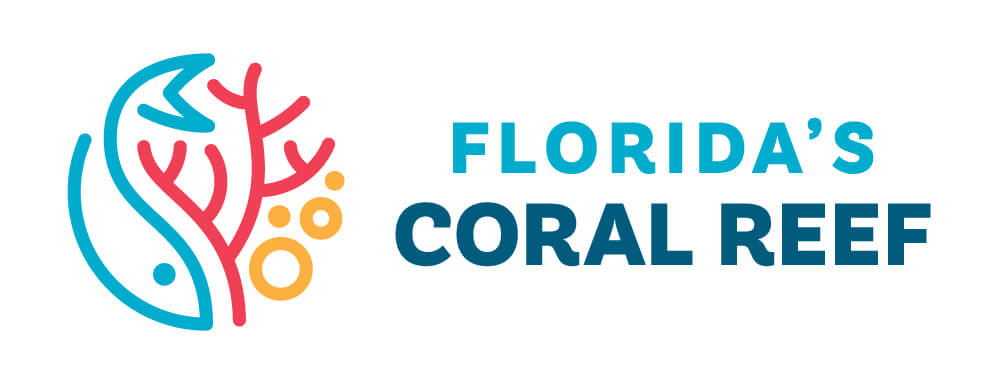
NOAA, partners launch groundbreaking Florida Keys coral reef restoration effort
In collaboration with state and local partners, on December 9, 2019, NOAA announced a bold strategy to restore and preserve seven coral reef sites in the Florida Keys, part of an unprecedented, decades-long effort to revitalize the region's highly diverse and economically valuable marine ecosystem.
The project, Mission: Iconic Reefs calls for restoring nearly three million square feet of the Florida's Coral Reef, about the size of 52 football fields, one of the largest strategies ever proposed in the field of coral restoration. Over the next year and beyond, NOAA will support this effort and work with outside partners to secure additional public and private funds.
"NOAA is fundamentally changing its approach to coral reef restoration by proactively intervening to restore reef health and improve ecological function," said Neil Jacobs, Ph.D., acting NOAA administrator. "Bold and decisive action has the very real potential to save one of the largest and most economically important reef ecosystems in the world before it's too late."
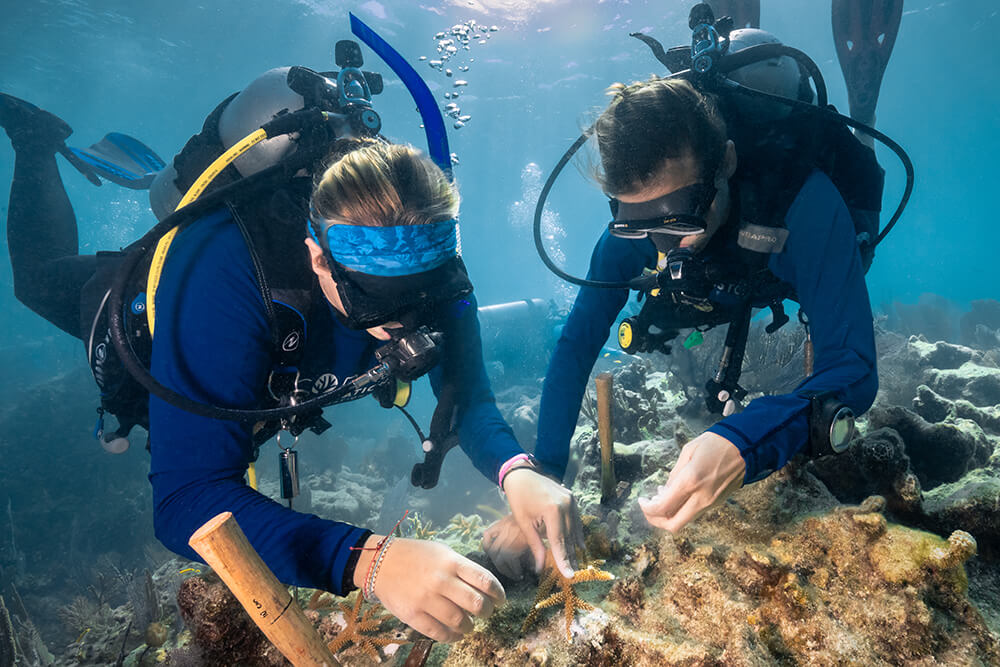
Mexican researchers declare highest priority for disease outbreak
Researchers surveying the Mexican Caribbean coast determined that the outbreak of stony coral tissue loss disease afflicted the entire area within a few months in 2018, increasing coral mortality and severely changed the structure of coral communities in the region. Noting that the disease is likely the most lethal ever recorded, they urge reef researchers, managers and stakeholders across the Western Atlantic to accord it the highest priority for the near future.
Scientists confirmed in October 2019 that stony coral tissue loss disease continued to spread westward in the Florida Keys. A survey of 31 sites placed the disease front six miles west of the Marquesas Keys.
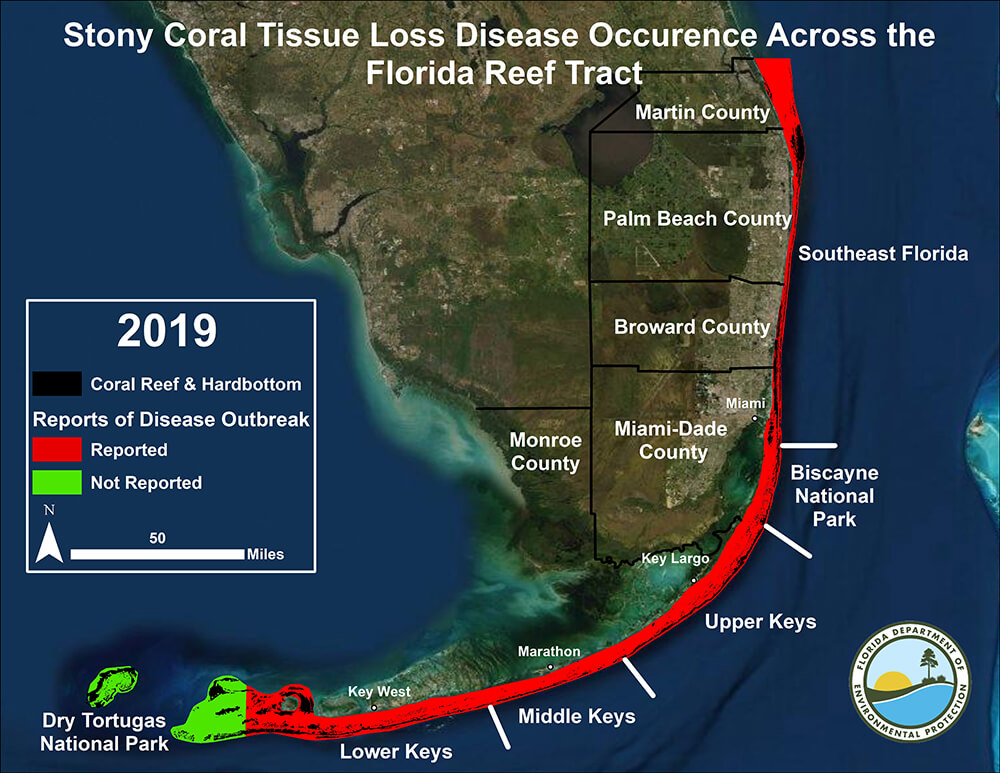
Another Caribbean island reports diseased corals
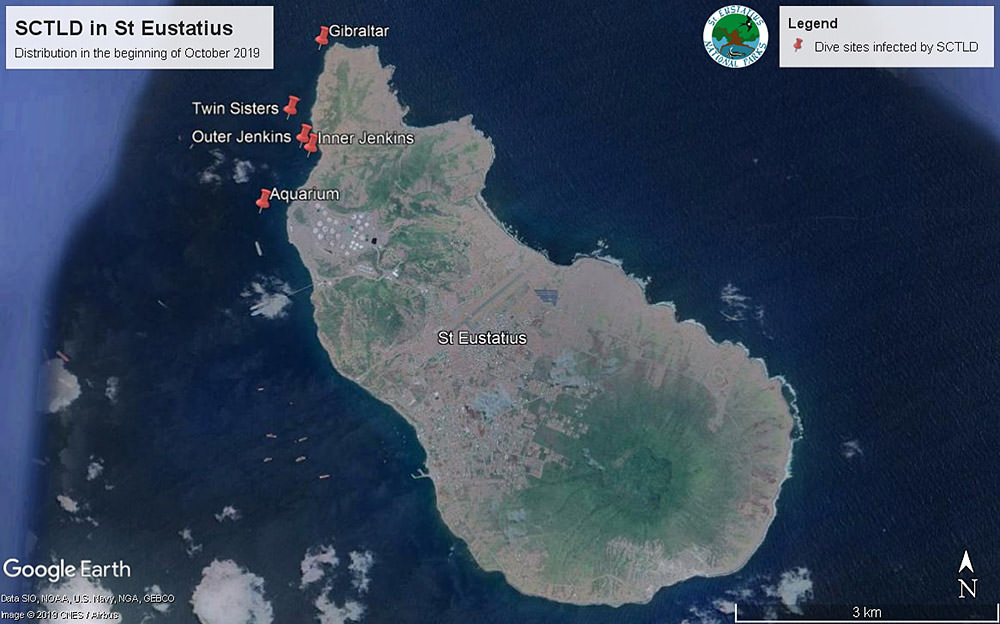
St. Eustatius joined seven other sites in the Caribbean reporting stony coral tissue loss disease. The outbreak is in the Northern Reserve of St. Eustatius National Park. Antibiotic treatment to contain the spread of the disease was initiated in October 2019. Other parts of the Caribbean reporting disease include in Mexico, Jamaica, Sint Maarten, the Dominican Republic, the U.S. Virgin Islands, the Turks and Caicos Islands, and Belize.
Marine activities suspended on diseased reef in Cozumel, Mexico
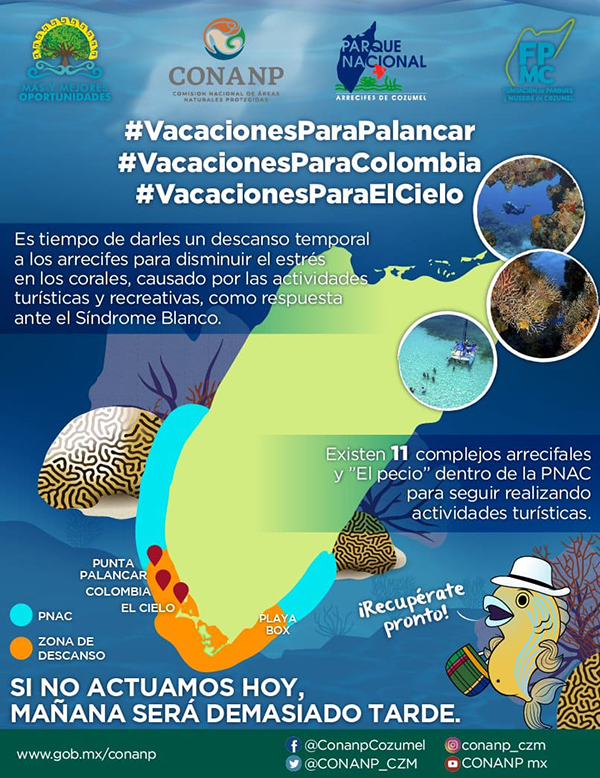
In response to the outbreak of stony coral tissue loss disease, the National Commission of Natural Protected Areas in Mexico is temporarily suspending tourist and recreational activities in a portion of Cozumel Reef National Park beginning on October 7, 2019, “to give rest to the best preserved sites of the National Park and contribute to its recovery.” A news bulletin said other actions are being taken to meet water quality standards. It notes a study indicating that 80 percent of the diving and snorkeling activity in Cozumel takes place within the National Park, which receives 1.8 million direct users per year.
Ballast Water Best Management Practices to reduce the likelihood of transporting pathogens that may spread stony coral tissue loss disease
At the request of NOAA, the United States Coast Guard is considering options to mitigate the potential factors that may be contributing to the spread of stony coral tissue loss disease including the potential transfer of pathogens in ballast water. Current federal regulations specify that certain ships conduct ballast water exchanges beyond 200 nautical miles of any shore prior to discharge of ballast water within U.S. waters. In additional, vessels are encouraged to use their existing ballast water management systems to treat ballast water prior to release. Outside of U.S. waters, unmanaged ballast water should not be released within either 12 nautical miles of any shore or water less than 200 meters in depth.
Coral spawning becomes high priority in Florida
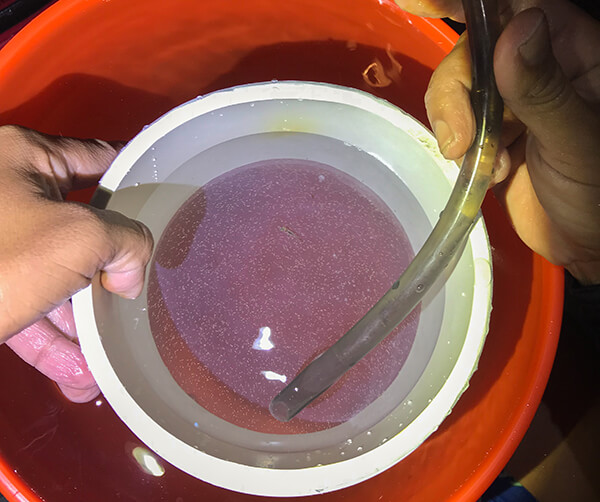
With stony coral tissue loss disease affecting the majority of the Florida Reef Tract, spawning of wild and lab-reared corals takes on greater urgency. During the August 2019 spawning event, an interagency team of divers conducted field collections at Western Dry Rocks, off Key West, with swimming larvae transported to The Florida Aquarium for settlement and grow-out. Coral typically spawn only once per year and, in the wild, may be too far apart for spawn to mix naturally. So, eggs and sperm are collected and mixed by hand to ensure successful fertilization. The resulting larvae will settle in tanks to be used for future restoration activities.
Researchers at the University of Miami, Nova Southeastern University, Keys Marine Lab, and Mote Marine Lab observed spawning of rescued corals including great star coral, elliptical star coral, and boulder brain coral. The Florida Aquarium made history simulating ocean conditions in a laboratory to induce natural spawning of endangered pillar coral. Scientists believe the breakthrough could ultimately help save corals in the Florida Reef Tract from extinction.
Induced spawning of Atlantic coral
Rescued corals spawn in captivity
Caribbean coral managers learn from Florida experience
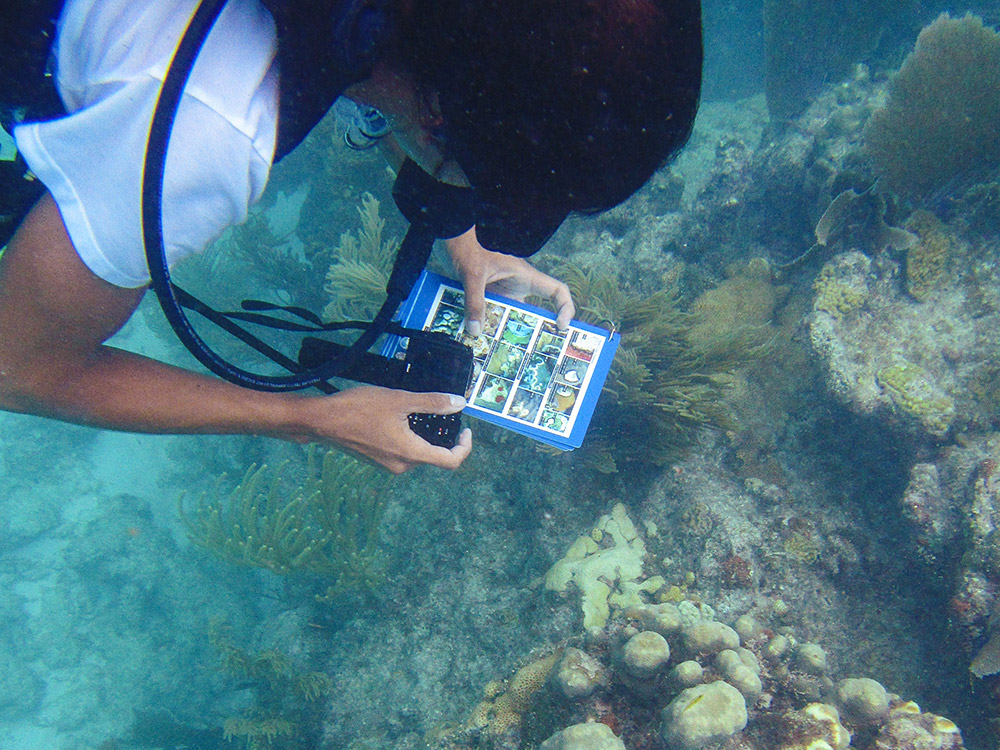
Marine resource managers from 16 Caribbean countries and territories attended a two-day workshop in Key West in August 2019 to learn how stony coral tissue loss disease has impacted Florida reefs and how to monitor for and treat the disease as it emerges in their region. The tissue loss disease has been observed in Mexico, Jamaica, Sint Maarten, the Dominican Republic, the U.S. Virgin Islands, the Turks and Caicos Islands, and Belize.
"Given the significance of coral reef ecosystems to our islands, it's necessary that we join forces with scientists, communities, and the authorities to find possible solutions to this issue. What we learn at this meeting is giving us a headstart in the face of this disease," said Argel Horton from the British Virgin Islands Ministry of National Resources, Labour and Immigration.
The meeting was an initiative of the MPAConnect Network, a partnership between NOAA's Coral Reef Conservation Program and the Gulf and Caribbean Fisheries Institute.
Florida Coral Crew recruitment begins

The Florida Fish and Wildlife Conservation Commission launched a campaign to educate the public and conserve Florida's coral reefs. Anyone can join the Florida Coral Crew to help support healthy, beautiful ecosystems and restore corals affected by disease. The FWC is looking especially for strong engagement from those out in the water for the lobster mini season July 24-25, 2019.
"We know our sportsmen and women care about our precious coral reefs and have the skills and energy to make a difference," said FWC Chairman Robert Spottswood. "We need their support as we work with partners on restoration efforts to combat the Stony Coral Tissue Loss Disease rapidly affecting our Florida Reef Tract."
Coral rescue mission in the Dry Tortugas
Corals rescued from Dry Tortugas National Park
Dry Tortugas National Park and partner agency scientists collected 410 corals within park waters July 1–5, 2019. The collection is part of the Coral Rescue Project, a multi-agency effort that aims to rescue healthy corals ahead of the stony coral tissue loss disease front. The collected corals from park waters were temporarily placed in land-based aquaria at the University of Miami's Rosenstiel School of Marine and Atmospheric Science. They will transferred to longer-term care facilities to preserve genetic diversity and to serve as breeding stock for future restoration activities.
Progress for the Florida Coral Rescue Project can be tracked here.
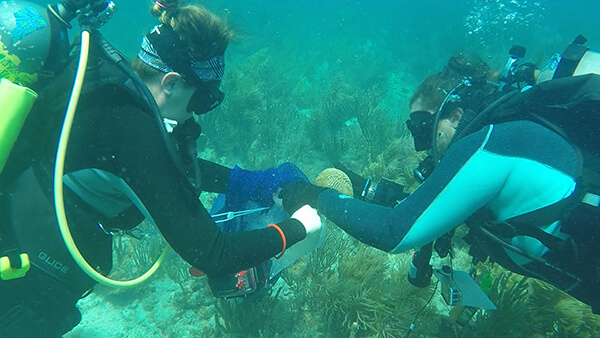
Rescue missions continue in southernmost Florida Reef Tract
More than 300 corals are resting comfortably in tanks at Nova Southeastern University's Halmos College of Natural Sciences and Oceanography in Dania Beach, Florida, after being rescued ahead of the stony coral tissue loss disease front. In May 2019 scientists rescued healthy corals west of Key West near the Marquesas in a continued effort to collect genetically diverse coral colonies for study and restoration purposes. This summer, more liveaboard cruises are planned beyond the Marquesas and in the Dry Tortugas.
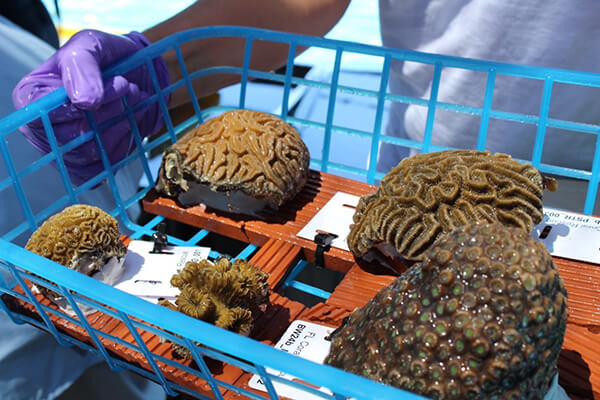
Coral rescue missions shift into high gear
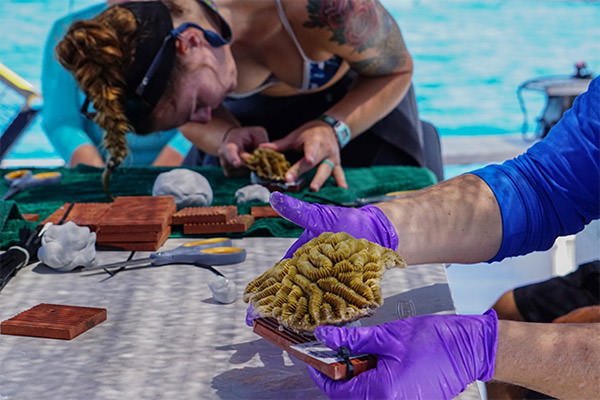
A rescue mission in early May 2019 collected approximately 350 select corals representing the genetic diversity that will be required for restoration of the Florida Reef Tract. Scientists from NOAA, FWC, Callaway Marine Technologies, and the University of Miami spent five days in the Marquesas west of Key West retrieving a variety of species not yet afflicted with stony coral tissue loss disease. The corals are quarantined at the University of Miami before being transported to an aquarium for long-term care and study. During the second phase of the rescue mission in late May, scientists plan to work from a liveaboard vessel for six days with a goal of collecting 450 more corals.
FWC's panel on coral disease highlights partnerships, response efforts
At its May meeting near Tallahassee, the Florida Fish and Wildlife Conservation Commission (FWC) hosted a panel of experts to discuss the multi-year stony coral tissue loss disease along the Florida Reef Tract.
Stony Coral Tissue Loss Disease: Lessons Learned & Resources from Florida
Hear from Dana Wusinich-Mendez (National Oceanic and Atmospheric Administration), Maurizio Martinelli (Florida Sea Grant), and Dr. Andrew Bruckner (Florida Keys National Marine Sanctuary) as they discuss the current knowledge of stony coral tissue loss disease, Florida's response to this disease outbreak, the status in the Caribbean, and current resources available.
Coral disease learning exchange supports regional response
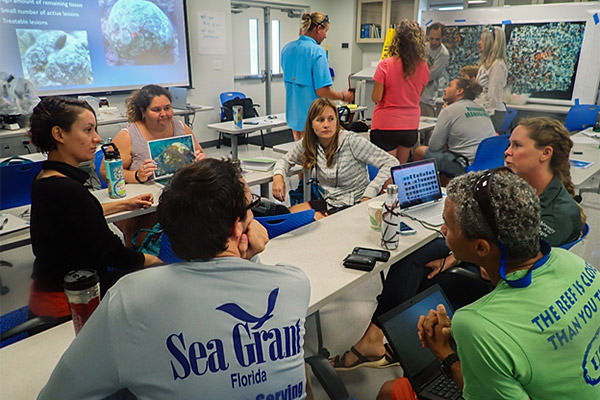
Partners involved in Florida's stony coral tissue loss disease response met April 30-May 3, 2019, with a visiting team of scientists and coral reef managers from the U.S. Virgin Islands to discuss response efforts and lessons learned. Disease signs similar to those in Florida first appeared southwest of St. Thomas, USVI, in December 2018 and have continued to spread in that area. This learning exchange was sponsored by NOAA's Office for Coastal Management and The Nature Conservancy's Reef Resilience Program. It included classroom and field training on the best available intervention and monitoring techniques currently being used in Florida, and additional information sharing about ongoing research efforts, rescue of genetic material, restoration planning, data management, citizen engagement opportunities, and communication about the disease with the broader community. Beyond connecting managers from across U.S. coral reef jurisdictions, this learning exchange provided an opportunity for response partners in Florida to help the USVI better and more quickly respond to the disease outbreak, and also provided additional opportunities to coordinate on finding a solution.
Florida Fish and Wildlife Conservation Commission leadership focuses on disease response
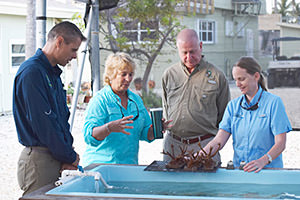
On April 6, 2019, FWC Chairman Robert Spottswood attended one of many trips researchers have been making to conserve Florida's important coral reef ecosystem.
A network of scientists from the FWC, the Florida Aquarium, the Coral Restoration Foundation, NOAA Florida Keys National Marine Sanctuay, the Keys Marine Lab, the University of Florida, Nova Southeastern University and Mote Marine Laboratory are working to combat the disease by introducing corals into specific locations.
"Innovative partnerships like this are vital to this complicated mission," Spottswood said. "The hands-on work of these experts is vital to strengthening our coral reefs and ensuring a positive future for this ecosystem."
Former military divers come to the aid of scientists combating coral disease
In April 2019, FORCE BLUE divers working with scientists from Nova Southeastern University are completing a 50 day dive mission to treat diseased coral colonies in the Florida Keys. Veterans with the nonprofit organization utilize their unique skills to apply antibiotic and chlorine treatments on diseased corals in the Florida Keys National Marine Sanctuary. The experimental treatments, funded by the Florida Department of Environmental Protection, aim to save priority coral colonies and provide scientific insight into stony coral tissue loss disease. As a bonus, the work also provides former combat divers with a new mission – saving Florida's coral reefs.
Project Protect - Stony Coral Tissue Loss Disease Interdiction
Have you seen this tag?
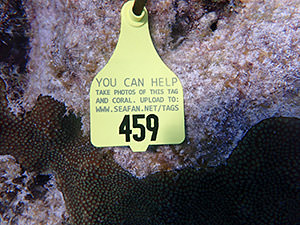
Divers and snorkelers in the Florida Keys can assist in monitoring the effectiveness of experimental treatments on diseased corals. You'll find hundreds of tags on treated corals at Carysfort South, Key Largo Dry Rocks, Grecian, Molasses, Crocker, Sombrero, and Looe Key reefs. Snap photos of the tag, the whole coral colony and any lesions or lines, especially near any nails in the skeleton. Then, upload the photos to seafan.net/tags. The visuals will help scientists determine how the disease is responding to various treatments.
Rescued corals reproducing in tanks
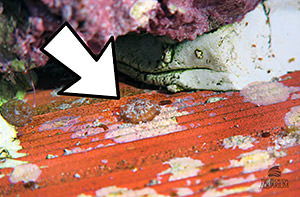
Scientists caring for corals rescued from the Florida Reef Tract report a baby boom. The encouraging news comes from The Florida Aquarium Apollo Beach Conservation Campus where several species of corals are housed temporarily in Coral Arks to preserve genetic diversity in the wake of the stony coral tissue loss disease outbreak. Unlike spawning corals, brooding corals have internal fertilization and release fully-developed planula larvae that settle quickly. The recruits are so small – 2-7 millimeters in diameter - that researchers initially are unable to determine to which species they belong.
Stony Coral Tissue Loss Disease response expands to Caribbean, Mexico
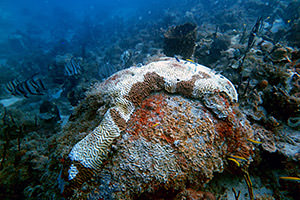
Scientists responding to stony coral tissue loss disease in Florida are consulting with resource managers throughout the Caribbean and Mexico where outbreaks in the U.S. Virgin Islands, Mexico, Jamaica, St. Maarten and the Dominican Republic share similar signs and patterns. However, making connection with the Florida outbreak will be difficult until the responsible pathogen or other causative agent is identified. That investigation is ongoing.
The Florida response team, consisting of more than three dozen government agencies, universities and conservation organizations, is exchanging information with resource managers throughout the region, including disease interventions and treatments. As global and local threats to coral reefs increase in frequency and severity, natural resource managers are combining their limited resources to strategically address common challenges.
Coral Disease Outbreak throughout the Caribbean
Coral Disease in the U.S. Virgin Islands
First report of Stony Coral Tissue Loss Disease in the Dominican Republic
Disease found off Key West
In January 2019, science divers confirmed that the outbreak of stony coral tissue loss disease on the Florida Reef Tract extends south and west of Key West. In December 2018, signs of disease were observed at Maryland Shoals near the Saddlebunch Keys and Middle Sambo Reef, south of Boca Chica Key. By mid-January, an additional five sites between American Shoal and Eastern Dry Rocks were confirmed diseased.
Mexican marine park managers visit Florida
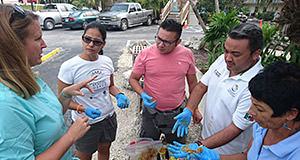
Managers from four Mexican marine national parks visited the Florida Keys in December 2018 to learn about stony coral tissue loss disease, which they now strongly suspect is affecting reefs in the Mexican Caribbean. Other Caribbean resource managers have expressed similar concerns. Mexico has initiated a regional monitoring program and is actively networking with international colleagues. The visitors saw first-hand the impact of the disease on Florida's coral reefs, and the likely cascading impacts on fisheries and tourism. They also examined management strategies such as dive gear disinfection. Marine national park managers in the region are connected through MPAConnect, a partnership among the Gulf and Caribbean Fisheries Institute, the NOAA Coral Reef Conservation Program and 30 Caribbean marine national parks.
Divers and snorkelers: Decontaminate your gear
Divers and snorkelers can reduce their likelihood of transferring stony coral tissue loss disease through proper buoyancy, avoiding touching marine organisms and sanitizing equipment between dives and before and after each dive excursion, especially when travelling between countries or between infected and uninfected locations.
General Guidelines
- Remove debris and sediment following each dive.
- Between dives, sanitize gear that contacts corals with a bleach solution. Other gear should be washed in freshwater with an antibacterial soap.
- Use quaternary ammonium solutions to decontaminate dive gear after return to shore.
- Properly dispose of disinfectant solutions and rinse water in a sink, tub or shower. Never pour into the ocean or a storm drain.
(Note: Quaternary ammonium wastewaters may upset septic systems and leak into groundwater.)
Detailed Decontamination Guidelines
Conference features Florida disease intervention science
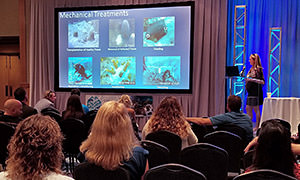
The interventions being employed against stony coral tissue loss disease on the Florida Reef Tract found a spotlight at Reef Futures, the first global conference addressing coral restoration and intervention science. The groundbreaking symposium, held in Key Largo, Florida, Dec. 10-14, 2018, tackled the challenges facing coral reefs globally by sharing available solutions, promising new research, and experimental techniques. A number of scientists involved in the collaborative response to stony coral tissue loss disease shared their findings and welcomed assistance in addressing the historic outbreak. While immediate and aggressive action on climate change is paramount for the long-term survival of reefs, conference participants concurred that repopulating degraded reefs with resilient, genetically-diverse, and reproductively-viable corals is also essential.
FORCE BLUE to deploy to the Florida Keys
Recognizing the urgency of the coral disease threat and the fact that the strategies and in-water techniques used to combat stony coral tissue loss disease will have implications far beyond Florida, FORCE BLUE is committing to supporting the Florida Department of Environmental Protection and Florida Keys National Marine Sanctuary. The nonprofit organization of former military divers will spend the winter of 2018-19 in the Florida Keys assisting with disease interventions and other response efforts.
Stony Coral Population Study
The authors of a paper published in Frontiers of Marine Science describe the stony coral tissue loss disease outbreak as an "ecosystem altering event" in Southeast Florida. Using population data from the Southeast Florida Coral Reef Evaluation and Monitoring Project (SECREMP), the study showed lower stony coral diversity, density and live tissue area related to increased disease prevalence from Miami-Dade to Martin County. The study noted particularly steep declines in some susceptible species including Maze coral (Meandrina meandrites), Elliptical Star coral (Dichocoenia stokesii), Great Star coral (Montastraea cavernosa) and Massive Starlet coral (Siderastea siderea), but also described increases in 'weedy' coral species such as Mustard Hill coral (Porites astreoides), Finger coral (Porites porites) and Lettuce corals (Agaricia spp).
Coral Rescue Mission

During an initial coral rescue mission in mid-September 2018, divers collected 88 colonies of corals in the Lower Florida Keys ahead of the disease front. The corals, representing 10 species susceptible to stony coral tissue loss disease, are banked to preserve genetic diversity for future restoration efforts. The genetic management plan in response to the disease outbreak calls for the collection of as many as 200 colonies of each susceptible species.
Healthy, disease-susceptible corals found near Miami
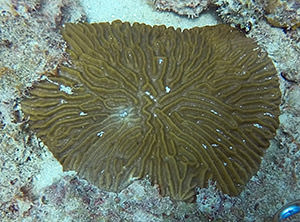
On a routine site assessment of the Port of Miami Anchorage Area, Florida Department of Environmental Protection divers found apparently healthy colonies of two of the most susceptible species to stony coral tissue-loss disease: one colony each of Maze Coral (Meandrina meandrites) and Symmetrical Brain Coral (Pseudodiploria strigosa). The team also found two apparently healthy colonies of Great Star Coral (Montastraea cavernosa), a species that often suffers from longer-term, chronic infections. The anchorage is situated in an area that has been impacted by this disease for nearly four years, suggesting that these corals are either exceptionally lucky or somehow are resistant to the disease. The colonies may prove vital to reseeding Southeast Florida reefs with these increasingly rare species.
Deep, diverse corals at greatest risk
A collaborative Mote Marine Laboratory and Florida Institute of Technology study suggests that deeper, diverse coral reefs are at a greater risk of being affected by stony coral tissue loss disease. The conclusions will inform management decisions in response to the outbreak. Read the full report.
Scientists work together to solve a coral disease mystery in Florida Keys National Marine Sanctuary
The Florida Keys are known for their lush coral reefs and incredible biodiversity. Protected by Florida Keys National Marine Sanctuary, the Keys support more than 6,000 species of plants, fishes, and invertebrates. But in the past few years, something has been targeting corals.
Partners Plan Response

Florida Keys National Marine Sanctuary, Florida Department of Environmental Protection, and the NOAA Coral Reef Conservation Program held a workshop on July 11-13, 2018, in Key Largo to create a comprehensive response plan to address the coral disease outbreak. The workshop focused on developing collaborative partnerships between resource managers and scientists to identify potential pathogens, document the outbreak, understand contributing factors, and aggressively pursue interventions. We are quickly compiling the workshop outcomes to create a framework for adaptive decision making about intervention actions, resource capacity and funding needs, regulatory issues and community engagement.


